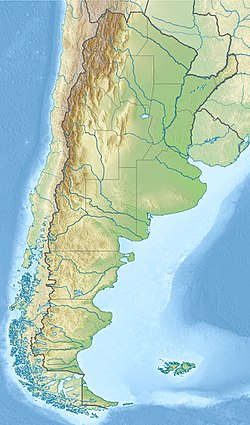Top Qs
Timeline
Chat
Perspective
La Amarga Formation
Rock formation in Argentina From Wikipedia, the free encyclopedia
Remove ads
The La Amarga Formation is a geologic formation with outcrops in the Argentine provinces of Río Negro, Neuquén, and Mendoza. It is the oldest Cretaceous terrestrial formation in the Neuquén Basin.
The type locality is La Amarga Arroyo and China Muerta Hill.[1] The La Amarga Formation unconformably overlies the marine Agrio Formation of the Mendoza Group. It is in turn overlain by the Lohan Cura Formation, separated by another unconformity.
Remove ads
Composition
There are three members within the La Amarga Formation.
- The oldest is the Puesto Antigual Member, which is approximately 28.9 metres (95 ft) thick and consists mainly of sandstone deposited in the channels of a braided river system. Paleosols, or soil deposits, are well-developed.
- The Bañados de Caichigüe Member is the next highest, approximately 20.9 metres (69 ft) thick. Alternating limestones, shales, and siltstones make up this member, indicating a lacustrine (lake) environment.
- Youngest and thickest is the Piedra Parada Member, approximately 109.4 metres (359 ft) thick in some sections. This member consists of alternating sandstones and siltstones from an ancient alluvial plain, with some swamp and paleosol deposits.
Remove ads
Fossil content
Summarize
Perspective
Most of the tetrapod fossils found in the La Amarga come from the Puesto Antigual Member.
Dinosaurs
Other tetrapods
Color key
|
Notes Uncertain or tentative taxa are in small text; |
Remove ads
See also
References
Further reading
Wikiwand - on
Seamless Wikipedia browsing. On steroids.
Remove ads



